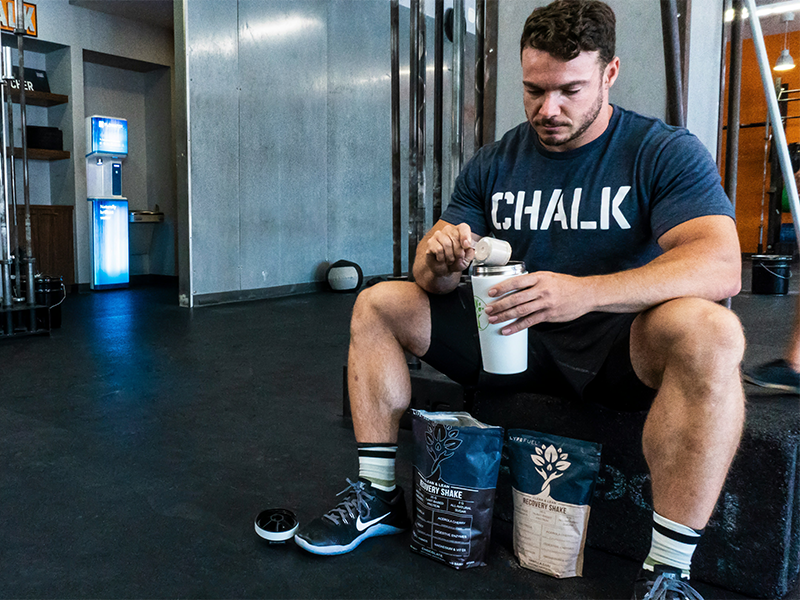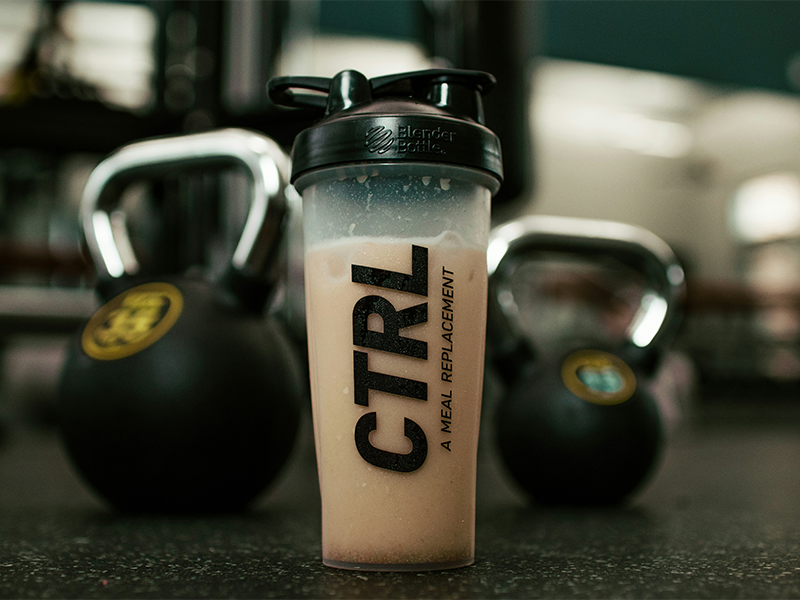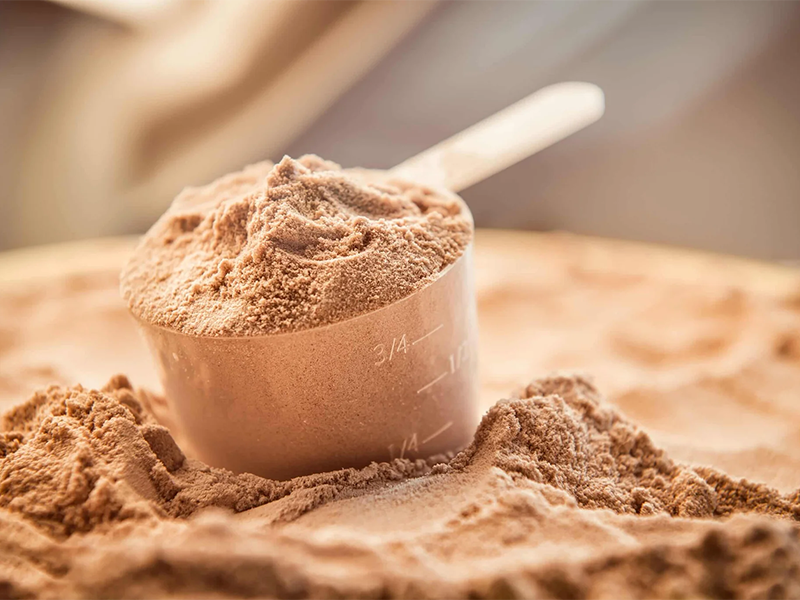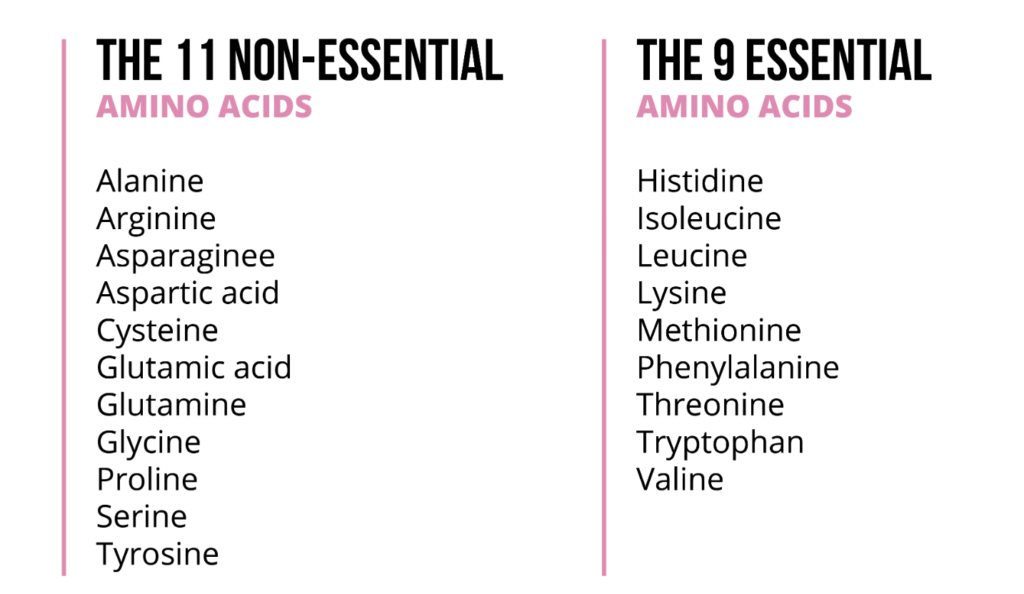
This post is designed to give you everything you need to know about protein to get started on a diet. We’re going to look at:
- How much protein you need
- How we divide that up throughout the day
- What the best sources of protein are.
This, of course, doesn’t cover everything, and there are always higher levels of detail that can be used, but for almost all intents & purposes, this will cover everything you’ll need to achieve most goals.
Why Protein Matters
Protein occupies a unique place in people’s minds nutritionally. You can find people who (rightly or wrongly) are pro and anti calories as a concept, pro and anti-carb, pro and anti-meat etc. However, you will struggle to find a single person who doesn’t view getting sufficient protein as fundamentally important to their diet, regardless of whether you are looking to lose weight, gain weight, or just diet for overall health.
There’s a good reason for this. Protein has a fundamentally different purpose than any other nutrient we take in.
While carbs & fats are primarily a source of energy, protein’s primary purpose is as a building block for our body. Our body uses protein as raw material not only for muscles, but to create just about all parts of our body, whether that’s connective tissue, organ tissue, or even the enzymes in your body. All of these things are made using protein.
Another key difference is that we can’t store protein long-term. With carbs, we can store them as glycogen, or convert them into body fat. We can the fat we eat into body fat as well. But with protein, we have no way to store it in our body long-term and still have it usable as a building block. Our body just doesn’t have a way to do it.
A lot of structures in our body, like our muscles, and our organs, are in a constant state of turnover. They’re being renewed. So our body needs a steady stream of raw material, ie. protein, all the time.
Since we can’t store protein, we need a large amount of it in a fairly steady stream. This is why it’s treated as more important than carbohydrates and fats. We can go without them for a while and be okay. We can’t go without protein and still maintain our muscle mass and all the other important functions.
How Much Protein Do We Need?
The best way to answer this question is in terms of how much total protein do we need on a daily basis?

How Much Is Too Much?
First off, is there such a thing as too much protein? You might hear the occasional person say that high protein intake can cause kidney stones, but there’s also other research showing that people in the short term can have up to 4 grams of protein per pound of body weight per day with no negative health outcomes. That’s a huge amount of protein, for an average person that would be over 600g of protein per day. So too much protein is not really something we have to worry much about for health reasons.
But there is such a thing as too much protein in a practical sense. We have an upper limit of what’s sensible for the calories we’re taking in, even if we’re gaining muscle. And there are more efficient ways for us to use our calories instead of it all just being protein. Carbohydrates make a better energy source. There’s a certain amount of fat we want to make sure we have in our diet for health reasons. So if we just filled our diet up with protein, we wouldn’t be getting any of those other things we need.
Let’s look at the other end.
What’s The Minimum Amount Of Protein We Should Have?
The government guideline for how much protein you should have per day is a minimum of 0. 8 grams per kg of body weight. This is pretty low. Bear in mind that this is designed for everyone, of all ages, of all sizes. Who may or may not do any physical training at all. And this is just a number for basic health, not for becoming strong, losing weight or growing muscle.
So if we’re looking to optimize performance, lose fat, grow muscle etc, we’ll definitely need more. There are two main benchmarks in terms of where we should be.
On the low end, there’s 1. 6 grams per kilo, which is about 0. 75 grams per pound, if you work in pounds. A few meta-analyses going through over a hundred studies have found that there’s no real benefit to strength, performance or body composition from having more than 1.6 grams of protein per kilo of body weight.
So we can set this as a low end for ideally where we want to be. This is a good thing if we want to have more carbohydrates, which you might want to do if you’re training a lot, but there are some other things to bear in mind as well.
The Protein Buffer
First off, this assumes you’re getting all of your protein from quality protein sources, (more on that later). If the protein is lower quality, which it might be if you’re vegan, for example, you want to have more protein than this just to make sure it does the job.
Another thing is just practical in terms of sticking to a diet.
Some people find that protein is really high satiety. It makes you feel full. It makes you feel more satisfied with what you’ve eaten, even if you’re in a calorie deficit. So some people on a fat-loss diet will have more protein just for that reason.
The high end of what we want to be is around 2.2 grams per kilo or 1 gram per pound of body weight. That’s the general recommendation in bodybuilding and sports nutrition, for people who have real muscular demands. If that’s the upper limit for them, so that should easily be the upper limit for us.
We want to be somewhere in between these two numbers, 1.6g-2.2g per kg of bodyweight, depending on what your needs are.
If you’re more plant-based, if you’re in a calorie deficit, you should be on the higher end. If you’re training a huge amount and you eat high-quality protein sources, you might put this number towards the lower end.

How To Spread Out Your Protein Intake
So once we have a total, the question is how do we divide this up?
Remember we mentioned earlier that your body has no way to store protein, so if we want to make sure we’re getting an even stream of protein throughout the day
The Protein Threshold
Your body has a threshold amount of protein it needs to use that protein for building muscle. Any smaller amounts below that threshold don’t signal to your body that that’s what it should be used for, and instead, it will just use the protein for energy.
For most people that threshold is normally around 15 to 20 grams. I’d recommend 20 for most people just to be safe.
Side note: This is worth bearing in mind when you see “protein snacks” with less than 10g of protein.
Some people say there’s an upper limit of 30 grams for protein intake, and that any more than that in one sitting just gets wasted. There’s research to suggest that that’s not true, especially if that protein is slow digesting or had as part of a meal. Remember though that the ideal is to spread this out as evenly as we can throughout the day.
My general recommendation bearing this in mind is to split your protein into 4-6 servings throughout the day. For most people, this will give you even servings of 20-40g throughout the day.
So for example, if I was eating 120 grams of protein a day, I would be looking to have 30 grams of protein in each of those four meals. But if the serving is anywhere between 20 and 40 grams, you’re probably fine.
Where To Get Your Protein
Now that we have some concrete targets, the next question is where do we want to get that protein from? Food packages now tend to advertise almost anything as a “source of protein” or “packed with protein”, but some sources are definitely better than others.
Luckily this has been researched very thoroughly, and there’s a really simple scoring system that will help you figure out whether something is a good protein source or not. This is called the PDCAAS, the Protein Digestibility Corrected Amino Acid Score
This gives foods a score from zero to one hundred percent based on how effective they are as protein for helping us build muscle and perform.
It’s based on two factors:
- How easily can you digest that protein
- How well does its amino acid profile match the one you need?
The first factor is easy to understand. The second one, not so much – so let’s explain.
Amino Acids
Protein, as we eat it, is made up of 20 different building blocks, amino acids. Some of these our body can produce, some of these our body can’t produce. The ones we can’t produce we call essential amino acids.

If you see BCAAs or EAAs as supplements, that’s what those are. It’s just those amino acids on their own.
Different protein sources have different amounts of those amino acids. If it contains all 20 amino acids, we call it a complete protein source. Meat, for example, has all 20 amino acids. So does dairy, and so does eggs.
Other sources that are incomplete protein sources, like beans and rice for example, have some of those amino acids, but not all of them.
If you’re taking in a protein source, and it doesn’t have all the amino acids your body needs in the right amount, then your body can’t use it very well for creating muscle, and will instead use it for energy.
Food like this would score lower on the PDCAAS. If something’s easy to digest and has all the amino acids we need to use it to build muscle it will score more highly
Ideally, we want protein sources that are higher than 90% on this scoring system. Things that score really highly on here tend to be things that suit meat eaters and vegetarians a little bit more, such as meat, dairy, eggs and so on.
If you are vegan and you don’t want to eat meat or dairy or eggs, the best way to go is protein supplements. Soy protein, mycoprotein and pea protein all score very highly on the PDCAAS
Protein Supplements
The more protein you can get through high-quality whole foods, like meat, dairy sources, like eggs, the better. But there’s absolutely nothing wrong with supplementing protein powder. Protein powders are safe, and convenient, and score very highly on the PDCAAS. Whether you’re vegan, or whether you’re an omnivore, or whether you eat meat, I would recommend using some protein supplementation.
Here’s a guide to some of the major ones:
- Whey protein – A dairy by-product, whey protein is a very high-quality, fast-digesting protein source. Its fast digestion speed makes it an ideal kind of protein powder to use before or after a workout when the demand for those amino acids is highest.
- Casein protein – Also a dairy protein, also really high quality, but unlike whey protein, it’s very slow digesting. It can take hours to fully digest. This means if you have long periods where you’re not eating, especially if you’re on a diet where you’re in a calorie deficit, this is a really good option.
- Vegan Protein Supplements – soy protein, mycoprotein, pea protein. These are all high-quality and safe options. Even soy (despite what some pseudoscience might tell you) is a very high-quality and safe option.
Action Points
So in summary, if you are hitting the right daily amount of protein, splitting it up evenly and choosing the right sources, your protein intake will be on point to support your training. So the rules are:
- Daily protein intake should be 1. 6 to 2. 2 grams of protein per kilo per day.
- Try to split that up evenly throughout your meals. If you’re eating four to six meals where you’re splitting that protein up evenly, that’ll work really, really well.
- Each serving should be between. twenty to thirty-five grams
- Each serving should be between. twenty to thirty-five grams
- Choose protein sources that score highly on the PDCAAS (think meat, dairy, eggs or protein supplements)